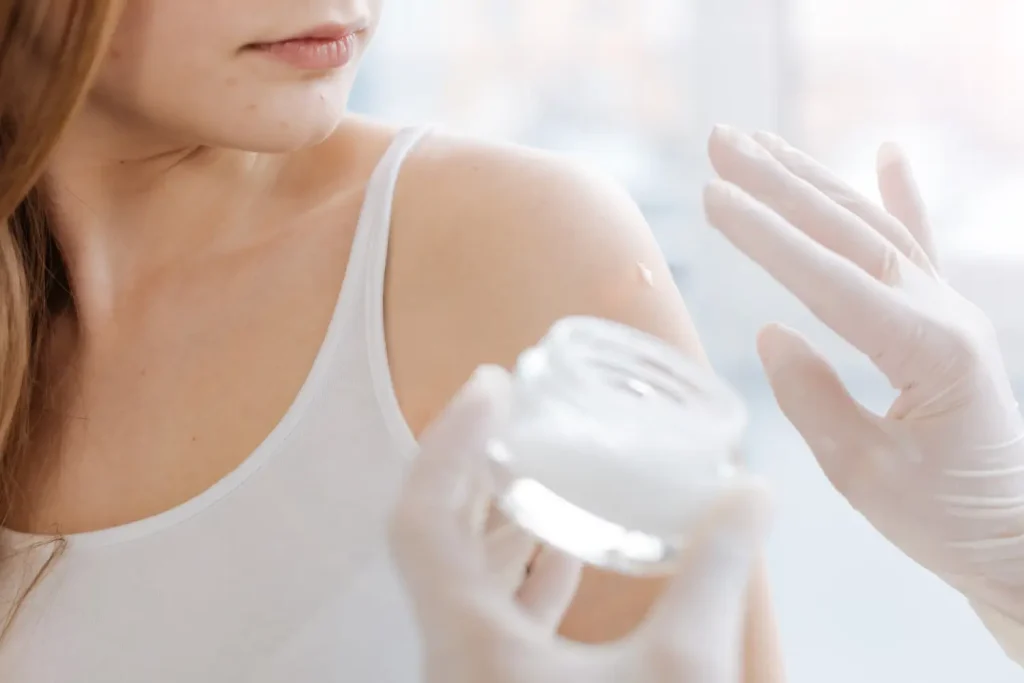Mesotherapy has developed as a popular and adaptable choice for patients seeking non-invasive alterations in the ever-changing field of cosmetic operations. This minimally invasive technique involves injecting a tailored blend of vitamins, minerals, and amino acids just beneath the skin’s surface, offering solutions for facial rejuvenation, cellulite reduction, hair restoration, and more.
Understanding mesotherapy injection depth is crucial for optimal results. This guide highlights why knowing the precise depth is key for satisfying aesthetic results. Let’s dive in!
What is Mesotherapy?
The key to mesotherapy’s effectiveness lies in its ability to deliver a customized blend of nourishing ingredients directly to the mesoderm layer of the skin, stimulating collagen production, enhancing circulation, and promoting localized tissue regeneration. This minimally invasive technique is designed to address a variety of aesthetic concerns:
Facial Rejuvenation: Mesotherapy nourishes and stimulates collagen production, promoting a youthful appearance. The targeted injections deliver essential nutrients, revitalizing the skin and enhancing its natural radiance.
Cellulite Reduction: Specifically designed to address localized fat deposits, mesotherapy targets cellulite, providing a solution for smoother and more toned skin. The injections work to break down fat and improve overall skin texture.
Hair Restoration: Mesotherapy plays a role in hair restoration by enhancing circulation and promoting hair growth. The injections stimulate the hair follicles, leading to improved hair thickness and vitality.
Mesotherapy Administration
Mesotherapy requires a skilled professional to administer the treatment. A medical professional needs first to evaluate the patient’s concerns and determine the targeted areas for treatment.
Before the injection, a topical anesthetic will be applied to minimize discomfort, although some mesotherapy formulations include local anesthetics. The mesotherapy injection process involves the use of fine needles, ensuring a delicate and precise application.
The treated area is then to be gently massaged to distribute the solution evenly. It is also necessary to provide post-treatment care instructions, such as avoiding sun exposure or certain skincare products.
Mesotherapy is made more effective by its customization, and that is based on the targeted area and the unique needs of each patient. This is where the depth of treatment plays a significant role.
Depth of Mesotherapy Treatment
Mesotherapy employs various injection techniques, targeting distinct skin layers to achieve specific aesthetic goals. The injection depth is a crucial factor, as it influences both the effectiveness of the treatment and the achievement of desired outcomes.
Challenges to Traditional Depths
Recent research has evolved our understanding of skin thickness, challenging the historical mesotherapy references. Traditional depths may not align with updated skin thickness data, prompting a reevaluation of injection practices.
Skin layer thickness variations were studied in vivo and ex vivo, resulting in proposed depth ranges: intra-epidermal (0.05 to 0.1 mm), superficial intra-dermal (0.1 to 0.2 mm), deep intradermal (1 to 2 mm), and hypodermic (3 to 7 mm). Recognizing the skin’s diverse nature, we suggest a mapped approach by cutaneous zone and age group.
Four Techniques for Four Depths
When looking at how to inject for mesotherapy, practitioners utilize four different techniques, each corresponding to a specific injection depth. These techniques cater to the unique needs of the treatment area and patient requirements.
Shallow Injections for Facial Rejuvenation
Traditionally, a 2-4 mm depth was suggested for facial rejuvenation, but recent research challenges this, emphasizing skin thickness variations.
Contrary to traditional practices, recent experiences suggest that shallower injections, approximately 1 mm deep, prove more effective for facial rejuvenation. This depth considers trigonometric relations and injection angles, ensuring the material reaches the desired dermal layer.
Personalized Depths for Optimal Results
Optimal mesotherapy results require a departure from the one-size-fits-all approach. Personalization is key, considering factors such as individual skin thickness, age, and the specific facial areas being treated.
Mesotherapy Advantages
Finally, here are some of the advantages that mesotherapy injections have over other cosmetic procedures for your clients.
Minimally Invasive: Compared to more invasive procedures, mesotherapy represents a gentler approach. This contributes to reduced downtime, allowing individuals to resume daily activities more swiftly.
Customizable Treatment: Mesotherapy stands out for its adaptability, offering a customized solution for diverse cosmetic concerns.
Potential Long-Term Results: By stimulating natural processes like collagen production and tissue regeneration, the procedure offers enduring benefits for a sustained youthful appearance, contributing to patient satisfaction.
Conclusion
Mesotherapy emerges as a versatile and effective solution for various aesthetic concerns – facial rejuvenation, cellulite reduction, and hair restoration.
In providing a tailored approach, treatment depth is critical for mesotherapy’s efficacy. The procedure’s benefits include minimal invasiveness, reduced downtime, and potential long-term results.
For those of you who wish to include mesotherapy products in your spa or clinic offer, the key lies in informed decision-making. It is essential to stay current with research and have access to qualified professionals. Additionally, be careful to locate the top brands available.
FAQ
What is deep mesotherapy?
Deep mesotherapy refers to a specialized technique within the broader field of mesotherapy, where injections are administered to reach deeper layers of the skin for targeted treatment.
This method involves injecting the mesotherapy solution beyond the standard mesotherapy needle depth of 1 to 4 millimeters to address specific concerns situated in deeper tissue layers.
Is mesotherapy intradermal or subcutaneous?
Mesotherapy can involve both intradermal and subcutaneous injections, depending on the specific goals of the treatment and the targeted skin layers.
In intradermal mesotherapy, injections are administered within the dermal layer of the skin, which is just below the epidermis, and subcutaneous mesotherapy involves injections into the subcutaneous tissue, which is the layer beneath the dermis
What happens if you do a subcutaneous injection wrong?
Incorrect subcutaneous injections can cause pain, bruising, infection, hematoma formation, uneven medication absorption, allergic reactions, and nerve or tissue damage. Proper technique, hygiene, and professional administration are crucial to minimize these risks and ensure safe and effective subcutaneous injections. Prompt medical attention is advised for any complications.
References
1. Nazem, S., Mohammadnejad, A.,(2022) ‘Depth of Treatment in the Facial Rejuvenation: The Neglected Point in Facial Mesotherapy’ Journal of Plastic and Reconstructive Surgery 2(1)
2. Canzona, F., Massimo, M., Tuzi, A., Maggiori, E., Grosso, M.G., Antonaci, L., Santini, S., Catizzone, A.R., Troili, F., Gallo, A., Paolucci, T., Rocchi, P., Guglielmo, C., Russo, D., Giorgio, C., Dorato, D., Di Marzo, R., Viglione, G., Fiorentini, A.G., Giardini, M., Natoli, S., (2020) ‘Intradermal Therapy (mesotherapy) in Dermatology’, Journal of Dermatology and Skin Science
3. Francoise, G. (2019) ’Updating of Mesotherapy Injection Depths’ La Medicina Estetica 4. Konda, D., Thappa, DM, (2013) ‘Mesotherapy: What is new?’ Indian Journal of Dermatology Venereology and Leprology, 79(1):127-34





















